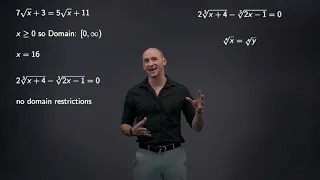
Solving Radical Equations Video 4
Solving equations with multiple radicals
Problem: Solve the following equations.

Solving equations with multiple radicals
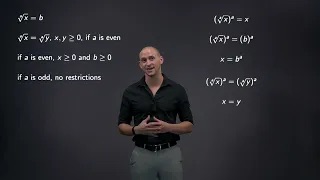
Explaining how to solve radical equations and then solving example problems
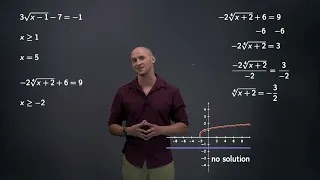
Solving equations with even roots and checking the solutions
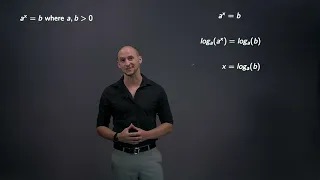
Explaining how to solve equations with power and exponential terms
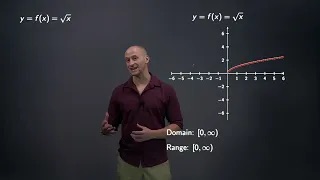
Explaining the general properties of even and odd root functions
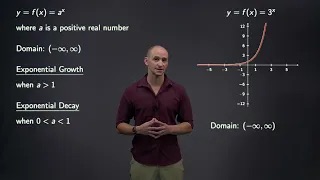
Properties of exponential growth and decay functions
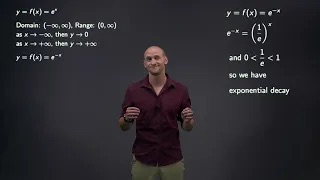
Properties of the exponential function with base e
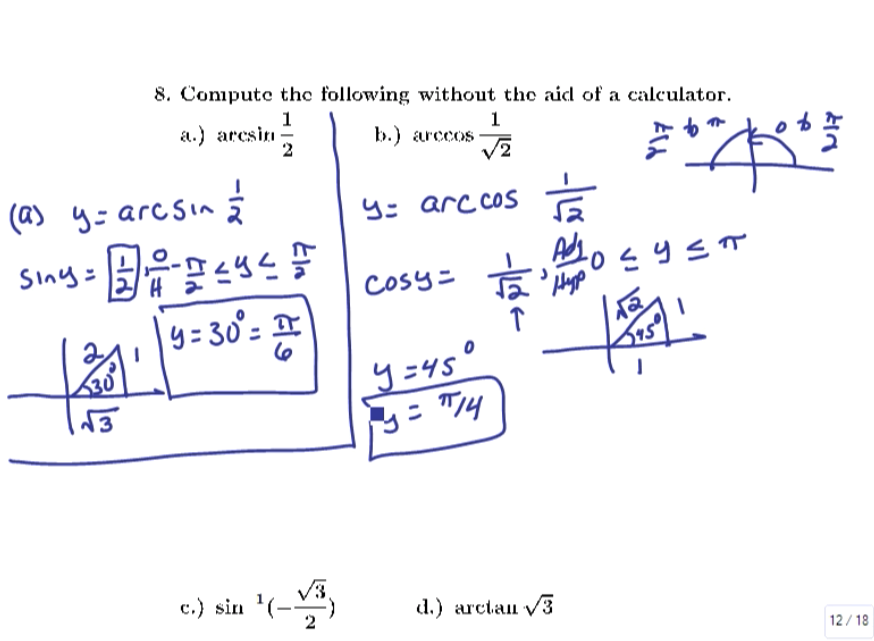
Properties and derivatives of inverse trigonometric functions

Properties and derivatives of inverse trigonometric functions

Properties and derivatives of inverse trigonometric functions

Properties and derivatives of inverse trigonometric functions
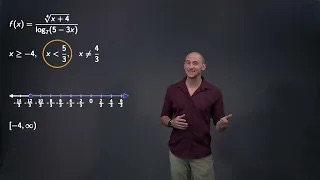
Finding the domain of a function with a root and a logarithm in the denominator
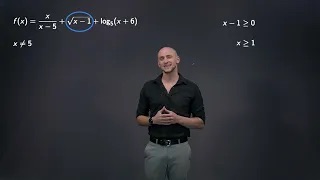
Finding the domain of a function with a denominator, square root, and logarithm
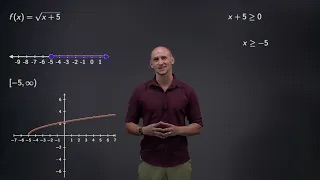
Finding the domain of even and odd roots
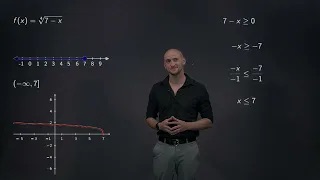
Finding the domain of functions with even and odd roots
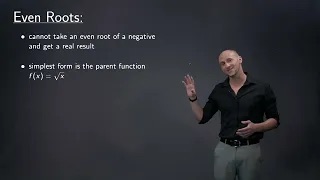
Explaining domain restrictions for denominators, even roots, and logarithms
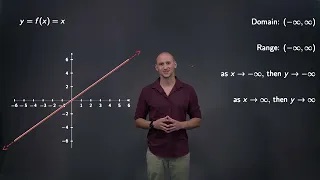
Discussing properties of linear functions
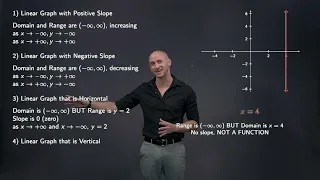
Discussing the types of linear graphs including horizontal and vertical lines and their properties
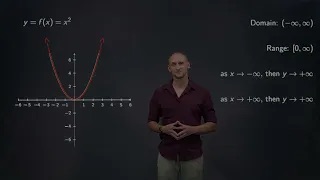
Explaining the graph and properties for the parent function of quadratics
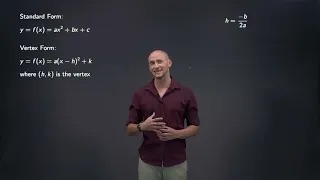
Discussing properties of quadratic functions including the vertex, domain, range, and end behavior
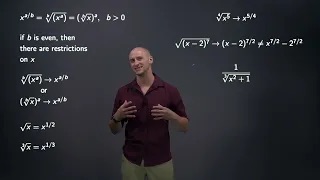
How to rewrite radical terms as power terms
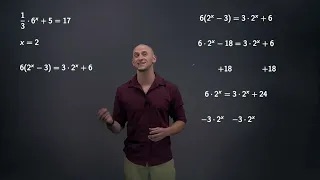
Solving equations with exponential terms

Solving equations with base e exponential terms

Explaining how to solve logarithmic equations

Solving logarithmic equations with a single logarithm term

Solving logarithmic equations with multiple logarithm terms

Solving logarithmic equations with multiple logarithm terms on both sides

Explaining the basic properties of logarithmic functions

Solving equations that contain rational expressions
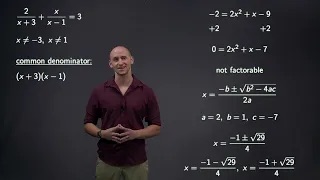
Solving an equation that contains rational expressions
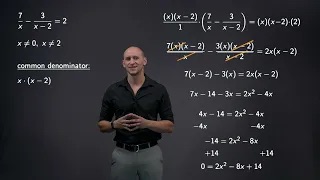
Solving an equation that contains rational expressions
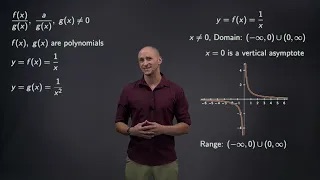
Discussing parent functions of rational functions and their properties

Determining the domain and range of a relation and if the relation is a function

Determining the domain and range of a relation and if the relation is a function

Determining the domain and range of a relation and if the relation is a function
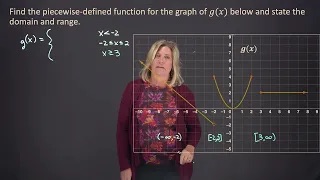
Finding the piecewise-defined function for a given graph along with its domain and range
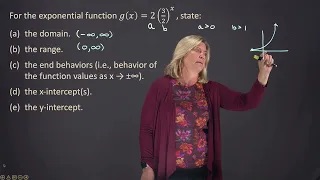
Finding the properties of an exponential function including domain, range, end behavior, and intercepts
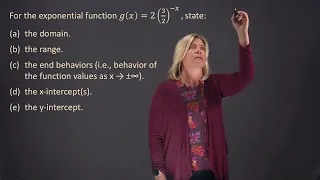
Finding the properties of an exponential function including domain, range, end behavior, and intercepts

Finding the properties of an exponential function including domain, range, end behavior, and intercepts

Finding the domain of a function that is a fraction containing an exponential and root

Finding the domain of a function that is a fraction containing an exponential and root
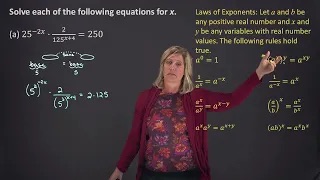
Solving an equation with exponential functions
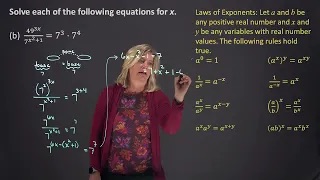
Solving an equation with exponential functions

Finding the domain, range, end behavior, and intercepts for a logarithmic function

Solving an equation with exponential functions

Solving an equation with a logarithmic function

Solving an equation with several logarithmic functions

Solving an equation an exponential function

Solving an equation with an exponential function

Solving an equation with exponential functions by factoring
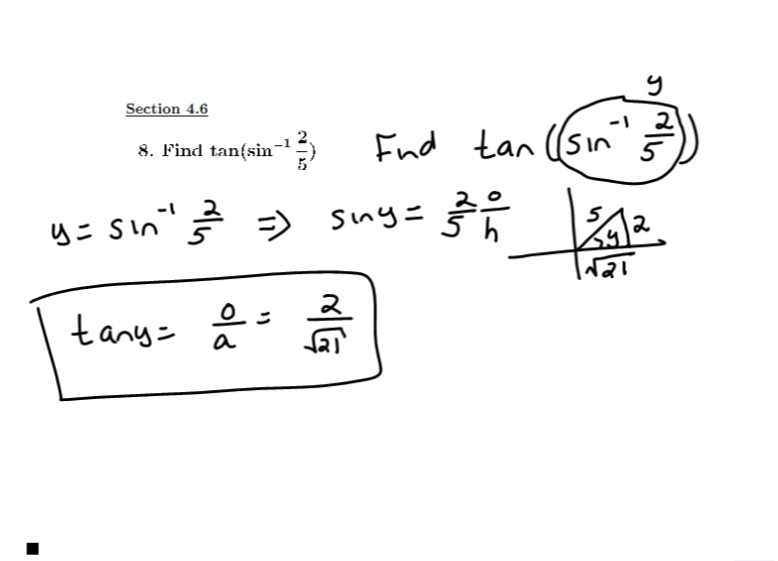
Review of limits and derivatives of inverse trigonometric functions
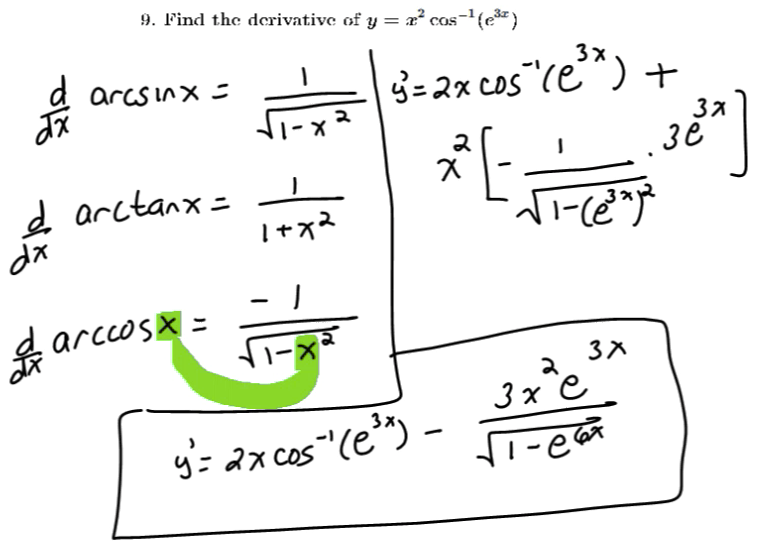
Review of limits and derivatives of inverse trigonometric functions

Continuity of Functions and the Intermediate Value Theorem

Review of limits and derivatives of inverse trigonometric functions

Review of limits and derivatives of inverse trigonometric functions

Continuity of Functions and the Intermediate Value Theorem
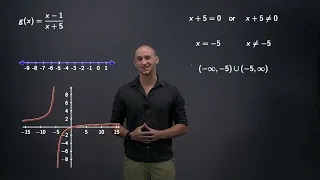
Finding the domain of several rational functions
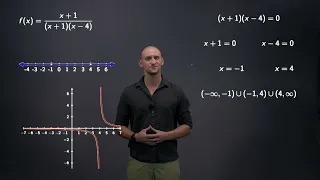
Finding the domain of a rational function
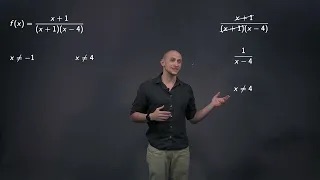
Explaining how to find any holes and vertical asymptotes of a rational function
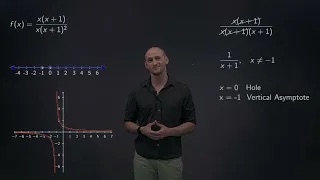
Finding the domain of a rational function using factoring
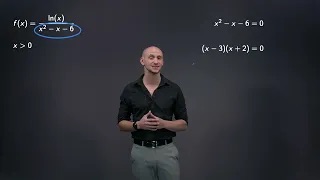
Finding the domain of a function with a natural logarithm and denominator
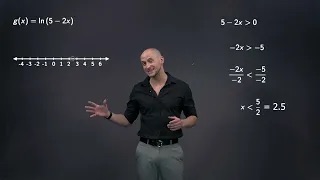
Finding the domain of a logarithmic function
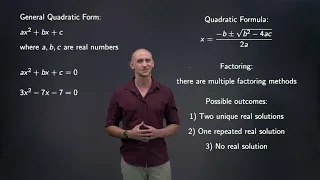
Explaining the standard form for a quadratic equation and the possible number of solutions

Solving quadratic equations with the difference of two squares formula
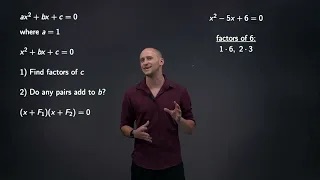
Solving quadratic equations by factoring

Solving a quadratic equation by factoring

Solving a quadratic equation by factoring
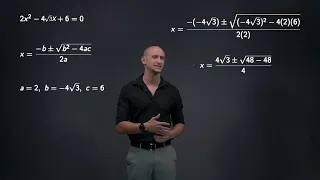
Solving quadratic equations with the quadratic formula and discussing the number of possible solutions

Explaining when a quadratic equation does not have a real solution
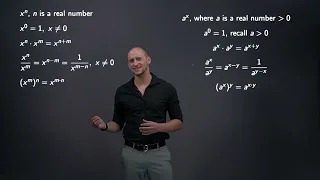
Properties of exponents applied to power and exponential expressions
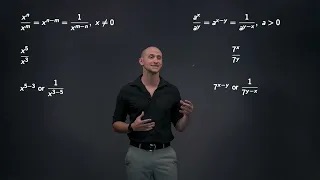
Properties of multiplying and simplifying power and exponential expressions

Properties of exponents applied to power and exponential expressions

Simplifying power and exponential expressions using properties of exponents

Simplifying power and exponential expressions using properties of exponents

Simplifying power and exponential expressions using properties of exponents

Simplifying an expression with both power and exponential functions using properties of exponents

Expanding logarithmic expressions using logarithm rules

Condensing a logarithmic expression into a single logarithm

Explaining how to multiply and divide rational expressions
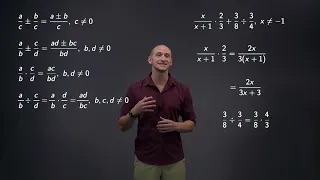
Performing algebraic operations with rational expressions and simplifying the answer

Sketching the level curves for a function of two variables

Solving a rational equation and checking the solutions

Solving an equation with logarithmic functions
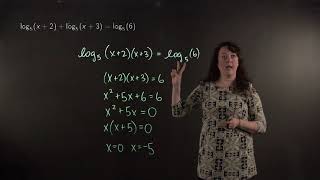
Solving an equation with logarithmic functions

Solving an equation with logarithmic functions

Solving an equation with logarithmic functions

Solving an equation with logarithmic functions

Determining if a graph represents a function and finding the domain and range

Finding the properties of a quadratic function such as the vertex, axis of symmetry, intercepts, etc.

Determining the end behavior, real zeros, domain, and y-intercept for a polynomial

Determining the end behavior, real zeros, domain, and y-intercept for a polynomial

Determining the end behavior, real zeros, domain, and y-intercept for a polynomial

Determining the end behavior, real zeros, domain, and y-intercept for a polynomial

Determining the end behavior, real zeros, domain, and y-intercept for a polynomial
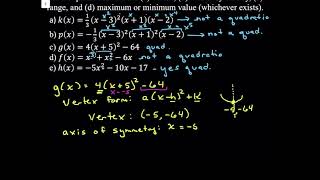
Identifying quadratic functions and their properties
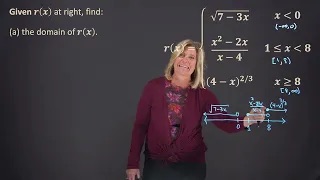
Finding the domain of a piecewise function and evaluating it

Finding the domain of a function that is a fraction containing exponentials and a square root

Finding the domain of a function containing a logarithm, exponential, radical, and fraction

Finding the domain of a function containing several logarithms

Finding the domain of a function containing a logarithm, exponential, and fraction

Finding the domain, intercepts, asymptotes, and holes of a rational function
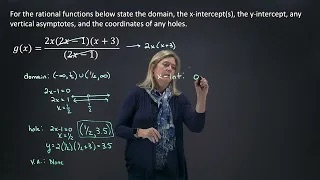
Finding the domain, intercepts, asymptotes, and holes of a rational function
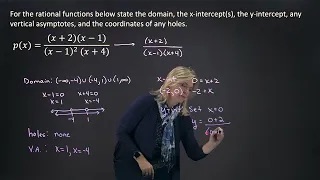
Finding the domain, intercepts, asymptotes, and holes of a rational function

Finding where a function with a fraction and cube root is continuous

Determining where a piecewise function is continuous algebraically

Using implicit differentiation to find the derivative of a function

Finding the intervals where a function is increasing/decreasing and the local extrema

Finding intervals of increase/decrease and the local extema for revenue from a word problem

Finding the intervals of concavity and inflection points for a function with exponentials

Determining the intervals of concavity and inflection points from the graph of a function

Using the second derivative test to find local extrema for a function

Finding the absolute maximum and minimum of a rational function on two closed intervals

Finding the absolute maximum and absolute minimum of a rational function on two closed intervals

Finding the selling price of trucks to maximize profit given the cost and price-demand functions

Finding the dimensions of the box with the largest volume given the amount of material to make the box

Finding the minimum cost of a box given the volume and cost of materials

Solving an indefinite integral with a cube root in the denominator using u-substitution

Explaining the Intermediate Value Theorem and the Bisection Method

Using the Intermediate Value Theorem and Bisection Method to approximate the solution of an equation

Writing a non-linear function to represent the line graphed on a semilog plot
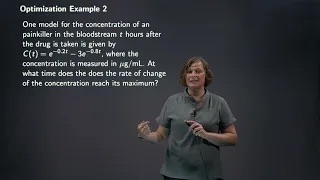
Using the second derivative to find the maximum rate of change in a word problem
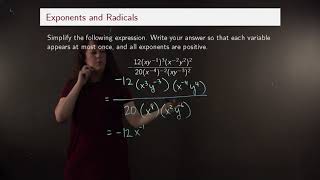
Simplifying a fraction using properties of exponents
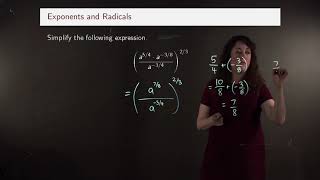
Simplifying a fraction containing fractional exponents
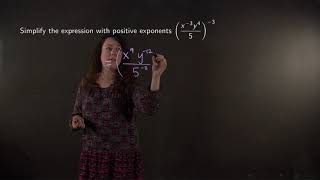
Simplifying a fraction with negative exponents

Solving an equation using the quadratic formula
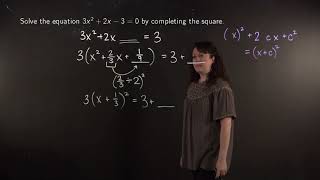
Solving a quadratic equation by completing the square

Solving a polynomial equation using factoring by grouping
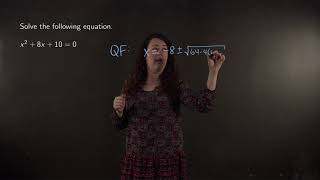
Solving a quadratic equation using the quadratic formula

Determining if an equation represents a function

Finding the domains of functions

Finding the domains of expressions
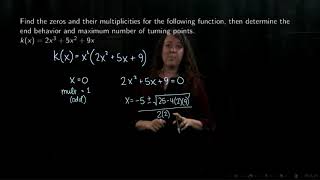
Finding properties of a polynomial including zeros and end behavior
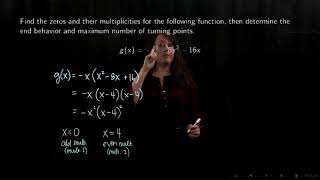
Finding properties of a polynomial including zeros and end behavior
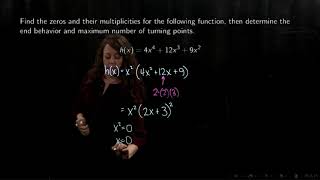
Finding properties of a polynomial including zeros and end behavior
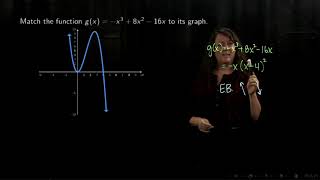
Using properties of a polynomial to find its graph
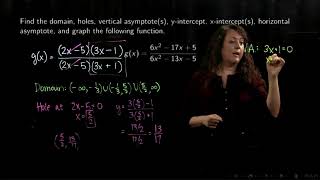
Determining the properties of a rational function and graphing it
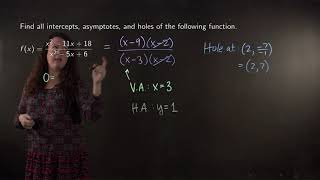
Determining the properties of a rational function and graphing it

Restricting the domain of a function so it is one-to-one and has an inverse

Determining algebraically the inverse of a function

Determining algebraically the inverse of a function

Determining algebraically the inverse of a function
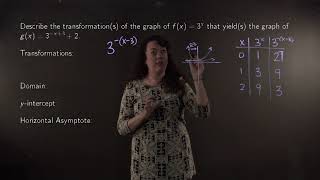
Determining properties of an exponential function
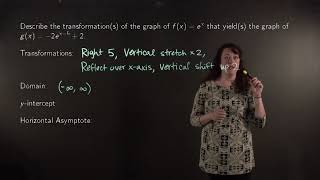
Determining properties of an exponential function
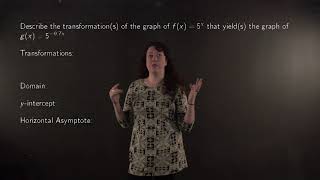
Determining properties of an exponential function
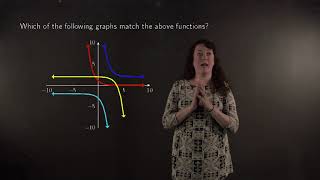
Identifying the graph of an exponential function

Solving an equation with an exponential function
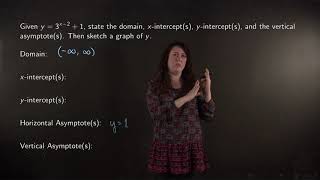
Determining properties of an exponential function
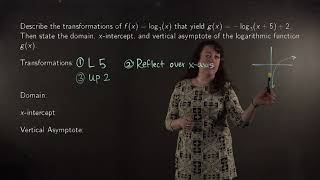
Determining the properties of a logarithmic function
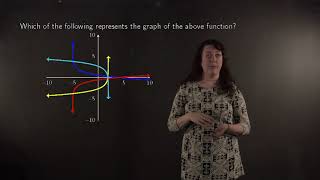
Determining the graph of a logarithmic function

Determining the properties of a logarithmic function

Determining the graph of a logarithmic function

Solving an equation with an exponential function

Solving an equation with an exponential function

Modeling a population size with an exponential function

Solving a trigonometric equation

Solving a trigonometric equation

Solving a trigonometric equation by factoring

Solving a trigonometric equation

Solving a trigonometric equation

Solving a trigonometric equation

Solving a trigonometric equation

Using a double angle formula to solve a trigonometric equation

Using a double angle formula to solve a trigonometric equation

Using a double angle formula to solve a trigonometric equation

Using double angle formulas to evaluate trigonometric functions

Using a graph to evaluate a function

Cartesian equations and parametric equations of curves

Review of limits, continuity, and the Intermediate Value Theorem
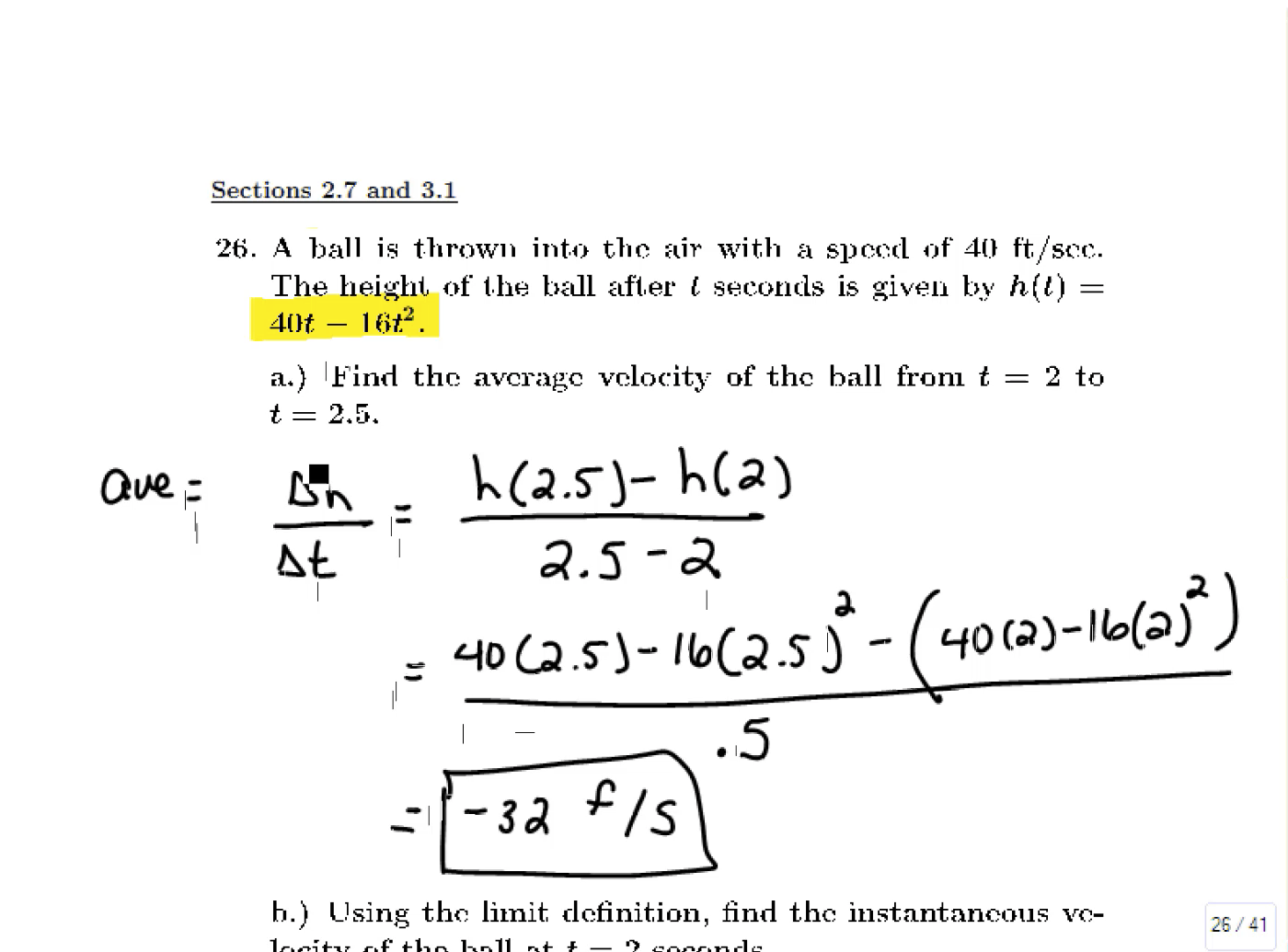
Review of the limit definition of a derivative and calculating the derivative

Review of the limit definition of a derivative and calculating the derivative

Review of the limit definition of a derivative and calculating the derivative

Review of the limit definition of a derivative and calculating the derivative

Using derivatives to find properties of graphs
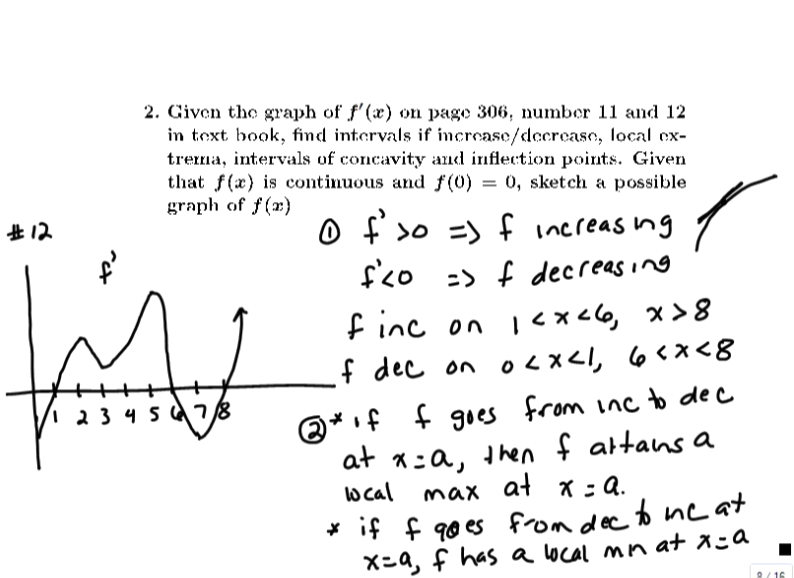
Using derivatives to find properties of graphs

Proving associative and scalar multiplication properties for vectors

Cartesian equations and parametric equations of curves

Review of limits, continuity, and the Intermediate Value Theorem

Review of the limit definition of a derivative and calculating the derivative

Review of the limit definition of a derivative and calculating the derivative
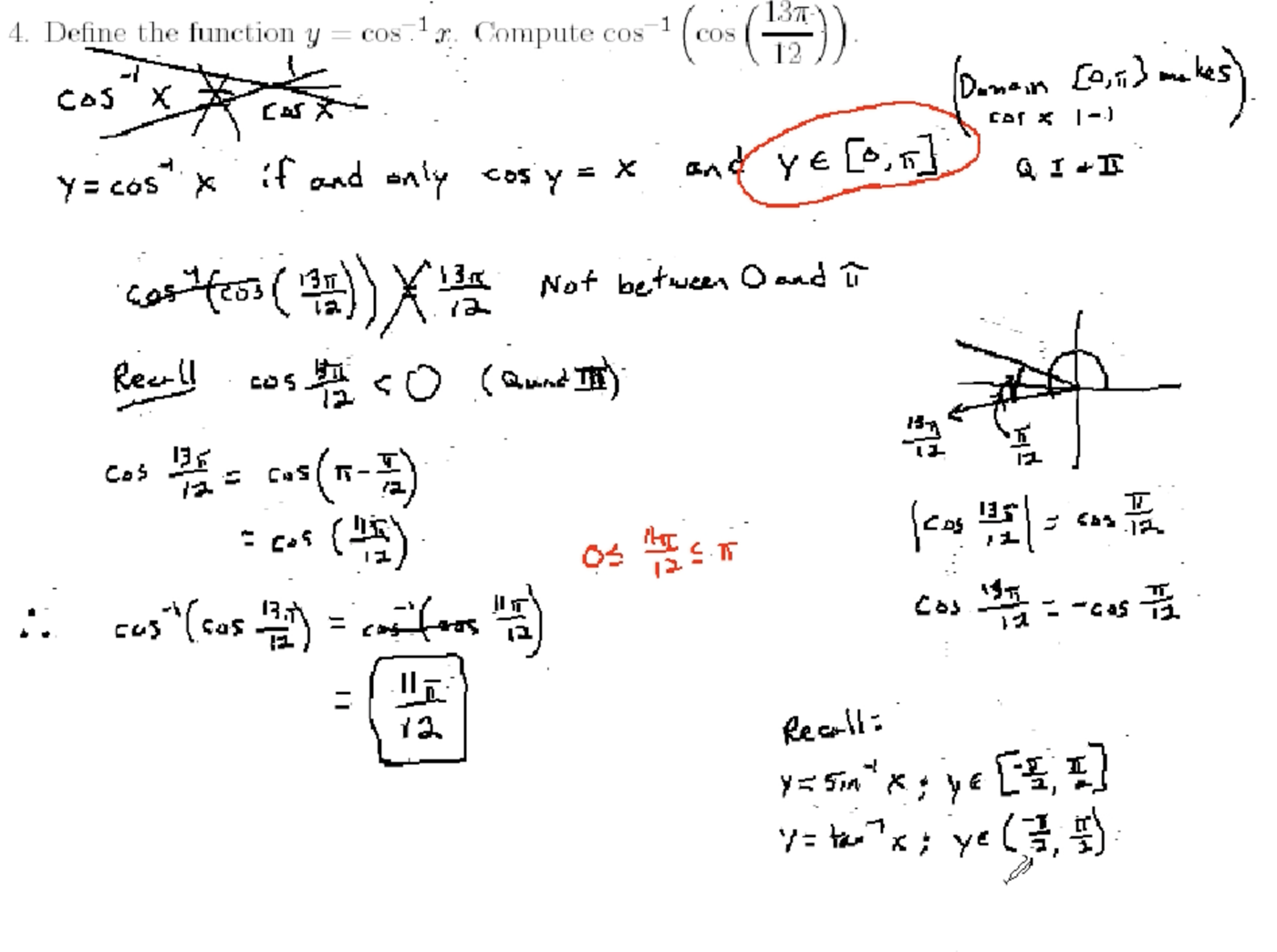
Properties of inverse trig functions and the derivative of arctangent

Review of the limit definition of a derivative and calculating the derivative

Review of the limit definition of a derivative and calculating the derivative

Properties of inverse trig functions and the derivative of arctangent

Using derivatives to find properties of graphs

Using derivatives to find properties of graphs

Determining the domain of a three-dimensional vector function

Finding and sketching the domain of a function of two variables

Finding and sketching the domain of a function of two variables

Evaluating a double integral over a given region by splitting it into two double integrals
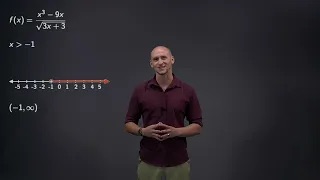
Finding the domain of a function with a square root in the denominator

Discussing how to write the equation of a line through two given points
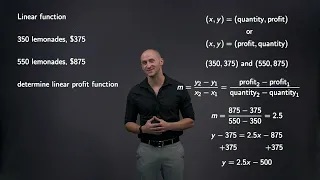
Writing a linear equation of profit from a business word problem
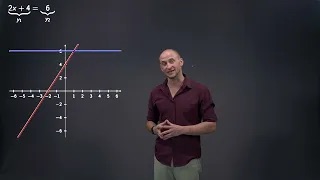
Solving a linear equation algebraically and showing how this relates to the graph
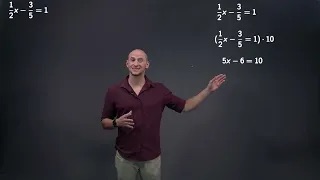
Solving a linear equation algebraically

Solving a linear equation algebraically and showing how this relates to the graph
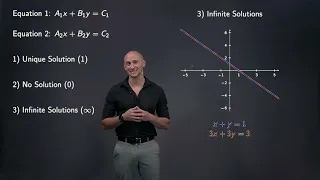
Explaining the format and possible solutions for a system of two linear equations

Solving a system of linear equations with two variables

Solving a system of two linear equations with two variables using the elimination method

Solving a system of two linear equations using a TI-84 calculator
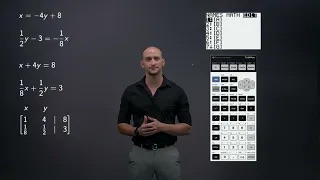
Solving a system of two linear equations using a TI-84 calculator
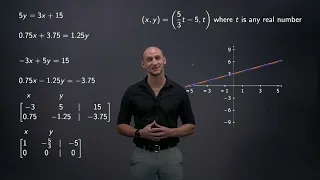
Solving a system of two linear equations using a TI-84 calculator
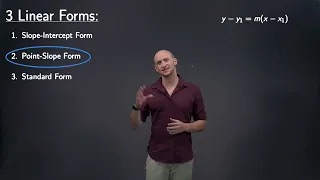
Explaining the main three forms for linear equations
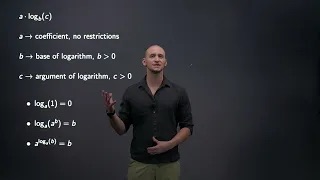
Explaining the terminology and rules of logarithms
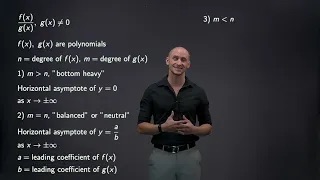
Finding horizontal asymptotes for rational functions
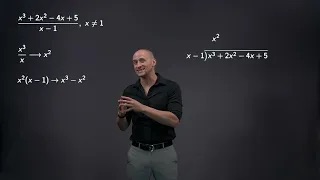
Explaining how to do polynomial long division

Finding horizontal asymptotes for rational functions

Determining the end behavior and horizontal asymptotes for rational functions

Explaining basic algebraic operations for fractions

How to simplify rational expressions

Adding and subtracting rational expressions by finding a common denominator

Evaluating and then finding and sketching the domain of a function of two variables

Finding and sketching the domain of a function of two variables

Sketching the level curves for a function of two variables

Explaining the format and possible solutions for a system of two linear equations
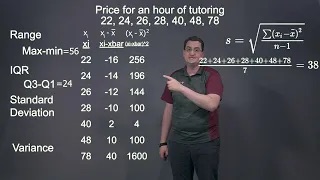
Finding the range, IQR, standard deviation, and variance for a given set of data

Simplifying an algebraic expression with exponents

Rewriting a function with a fractional exponent in radical form

Writing the domain of functions with radicals in interval notation

Finding the domain, intercepts, holes, and vertical asymptotes for a rational function

Finding the domain of a piecewise-defined function and evaluating it for given x-values

Finding properties of a polynomial function such as the degree, end behavior, y-intercept, etc.

Finding properties of a polynomial function such as the degree, end behavior, y-intercept, etc.

Stating the domain in interval notation of a function with radicals, fractions, and exponentials

Find the domain of a function in interval notation with a fraction and logarithm

Using the quadratic formula to find the roots of a function

Finding the roots of a cubic polynomial

Finding the roots of a square root function

Finding the roots of a function with an absolute value

Finding the domain of a rational function

Finding the domain of a rational function

Finding the domain of a function with a fraction and radicals

Finding the domain of a function with a quadratic inside a square root

Finding the inverse of a linear function and its domain

Finding the inverse of a square root function and its domain

Finding the inverse of a rational function and its domain

Finding the inverse of a rational function and its domain

Finding the domain and x-intercepts of a logarithmic function

Finding the domain and x-intercepts of a logarithmic function

Solving a logarithmic equation using properties of logarithms

Solving a logarithmic equation using properties of logarithms